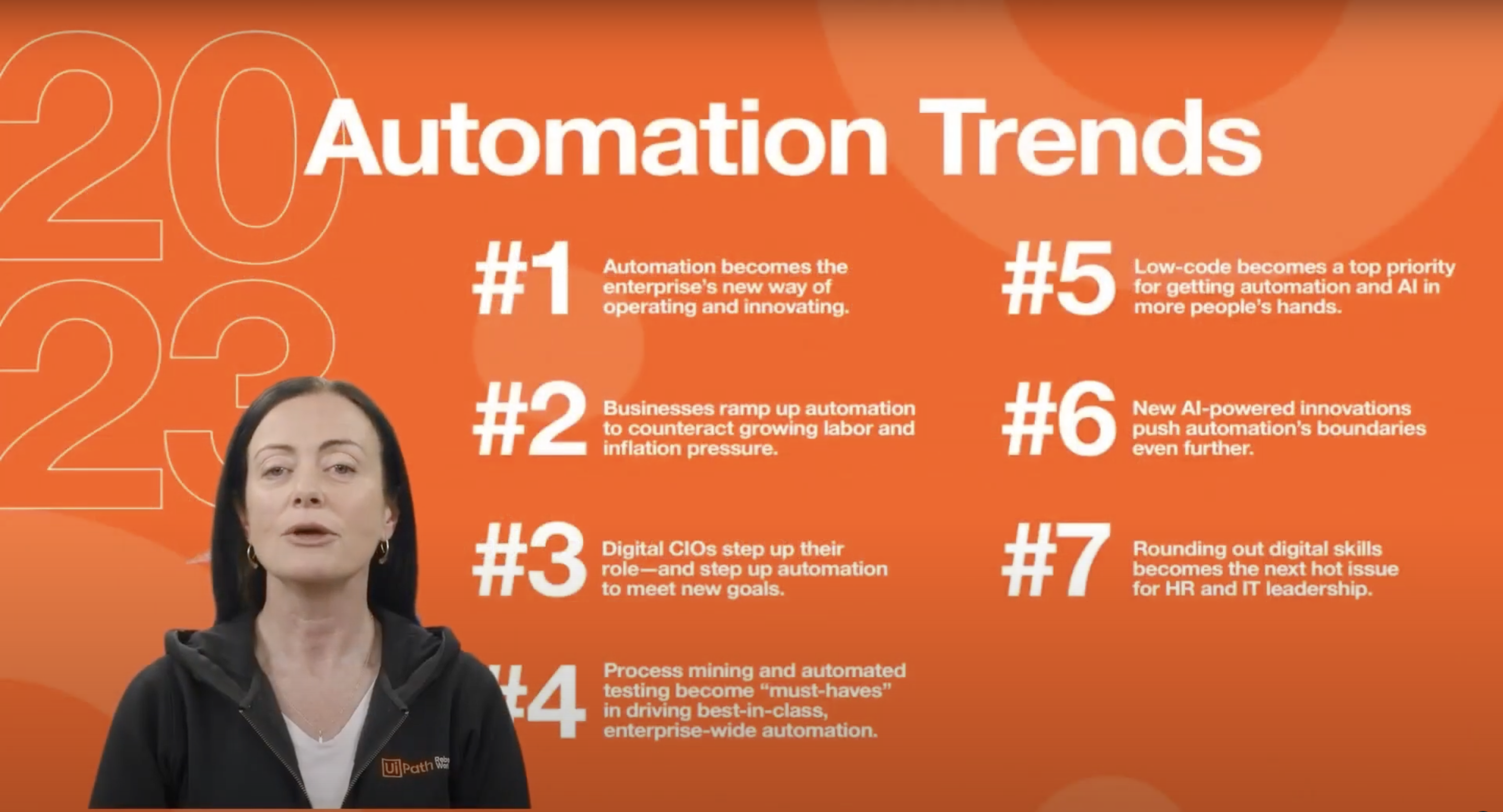Top trends in insurance automation
Share at:

Editor's note: the article, below, was published in 2023. For the 2024 trends, check out the 2024 UiPath Automation and AI Trends e-book. And see more ways insurance companies are using AI-powered automation on the UiPath insurance automation page.
The insurance industry is under pressure on many fronts. Costs are rising, competition is increasing, and customers are demanding more. To stay ahead of the curve, insurers are turning to automation.
Automation is nothing new to the insurance industry. Underwriting has been automated for decades. But what is new is the extent to which insurers are using the technology. Every aspect of insurance is being touched by automation, from claims processing to customer service.
This blog will explore the trends driving this automation boom. We'll look at how insurers are using automation to cut costs, improve efficiency, and meet the needs of their customers. We'll also explore the challenges that come with automation and what the insurance industry can do to overcome them.
1. Automation becomes the insurance enterprise's new way of operating and innovating
As insurance companies look to the future, automation will play an increasingly important role in how they operate and innovate. There are many different ways that insurers can automate their workflows, from simple tasks like data entry and claims processing to more complex functions like underwriting and customer service.
One of the key benefits of automation is its ability to improve efficiency and accuracy. By automating repetitive tasks, insurers can free up staff to focus on more value-added activities. Automation can also help to reduce errors and inconsistencies, providing a better experience for customers and helping to improve business results.
In addition, automation can help insurers become more agile and responsive to change. By automating processes and workflows, businesses can quickly adapt to new market conditions or customer needs. This flexibility can be a critical competitive advantage in today's rapidly changing world.
Finally, automation can also help insurers drive innovation within their businesses. By freeing up staff from mundane tasks, businesses can encourage them to focus on developing new products, services, or processes. This type of innovation is essential for businesses to stay ahead of the curve in an ever-changing marketplace.
2. Insurance companies ramp up automation to counteract growing labor and inflation pressures
In recent years, we've seen a growing trend of insurance companies automating their operations. This is in response to two main pressures: the need to cut costs, and the need to keep up with the competition in challenging macroeconomic conditions, including a high-inflation environment.
Labor costs are one of the biggest expenses for any business, and they're only going to rise as inflation increases. Automation can help insurance companies reduce their labor costs by doing tedious tasks like processing claims and issuing policies.
In addition, automated systems often do a better job than humans when it comes to tasks like data entry and analysis. This means that insurance companies that automate their operations will have a competitive advantage over those that don't.
No matter which approach an insurance company takes, there are a few things that are essential for success: careful planning, clear goals, and ongoing monitoring and evaluation. By taking these steps, insurance companies can make sure they're getting the most out of their automation efforts.
3. Digital CIOs step up their role—and step up automation to meet new goals
As digital transformation initiatives continue to take off, the role of the chief information officer (CIO) is becoming more important than ever. CIOs need to be able to lead their organizations through digital change and help them realize the benefits of automation. This means that they need to have a good understanding of the different types of automation technology and how it can be used to achieve business goals.
One of the challenges CIOs face is that there’s no one-size-fits-all solution when it comes to automation. The best approach will vary depending on the organization's specific needs and goals. CIOs need to work closely with other members of the executive team to identify where automation can be most beneficial. They also need to have a clear understanding of the organization's existing IT infrastructure and how new automation solutions will fit into it.
Once the decision has been made to implement automation, CIOs need to take a strategic approach to deploying it. They should start by identifying which processes are most suited to automation and which ones will require custom solutions. They also need to consider how different automation technologies will work together and interact with existing systems. It's important to remember that successful automation requires careful planning, clear goals, and ongoing monitoring and evaluation.
4. Process mining and automated testing become "must-haves"
As insurance companies strive to achieve best-in-class automation, process mining and automated testing will become increasingly important. Process mining can help identify inefficiencies and bottlenecks in business processes, which can then be addressed through automation. Automated testing can help ensure that new or updated automation solutions are working as intended and identify any potential issues before they cause problems in production.
Process mining is a relatively new technology that’s well-suited to insurance applications. It uses data from event logs to create visual representations of business processes, which can then be analyzed to identify areas for improvement. Automated testing, on the other hand, is a well-established technology that’s been used extensively in other industries. It involves running tests on software code to check for errors and ensure that it meets the required specifications.
Both process mining and automated testing can help insurance companies achieve best-in-class automation by identifying areas where improvements can be made and ensuring that new or updated automation solutions are working correctly.
Discover three additional trends in insurance
As the insurance industry continues to evolve, automation will play an increasingly important role. We’ve shared four of the seven top trends we’re seeing in insurance automation above. To learn about the remaining three, check out the video below.


Industry Marketing Manager, FINS, UiPath
Get articles from automation experts in your inbox
SubscribeGet articles from automation experts in your inbox
Sign up today and we'll email you the newest articles every week.
Thank you for subscribing!
Thank you for subscribing! Each week, we'll send the best automation blog posts straight to your inbox.



